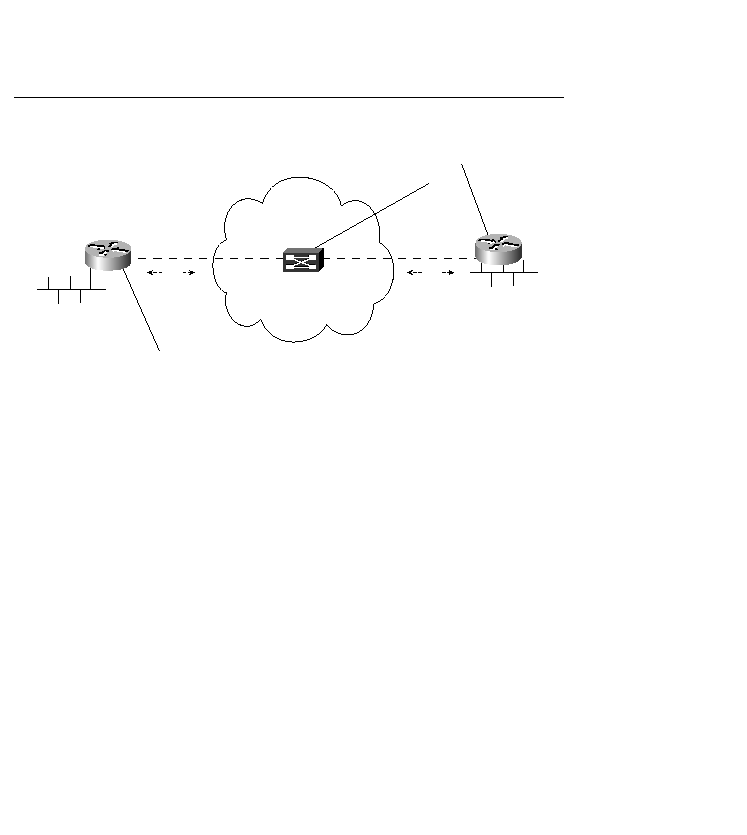
344 Chapter 10: X.25/Frame Relay Topologies
Figure 10-11
X.25 Over ISDN
X.25 Design Tips
Here are some general design tips every CCDP should know about X.25:
·
An X.25 interface can support 4095 PVCs because there are only 12 bits in the packet
header to specify the Logical Channel Number (LCN).
·
What is a large number of SVCs per interface? One hundred VCs is a rather common
figure, although up to 600 VCs have been implemented successfully in an XOT
environment.
·
X.25 doesn't have any protocol overhead for PVC maintenance (unless XOT is involved).
·
Typical bandwidth of X.25 interfaces is 64 Kbps. Sharing such a low bandwidth among
many virtual circuits results in a very low figure per virtual circuit. This low figure must
be compatible with user requirements.
·
When applicable, an X.25 map or other commands are required to configure each virtual
circuit. Repeating the same configuration pattern many times might cause a significant
usage of NVRAM. Just count the bytes needed to configure one virtual circuit and do
some multiplication to figure out the amount of NRAM available. NVRAM compression
is sometimes available.
·
X.25 is implemented at the process level (at least up to 11.1 IOS). The best routers to use for
X.25 traffic are not necessarily the best routers to route IP. X.25 encapsulation is a CPU-
intensive task because it involves sequence checking, flow control, and fragmentation.
·
A safety factor needs to be applied to such figures, so it doesn't matter much if they don't
match real measurements. Real results depend on many parameters. Network design
cannot be based on 100% CPU utilization.
Local phone company
D channel
X.25
D channel
X.25
ISDN
switch
ISDN BRI port
ISDN BRI port
PPP over X.25 over the
D channel
Cloud
87200333.book Page 344 Wednesday, August 22, 2001 2:53 PM
